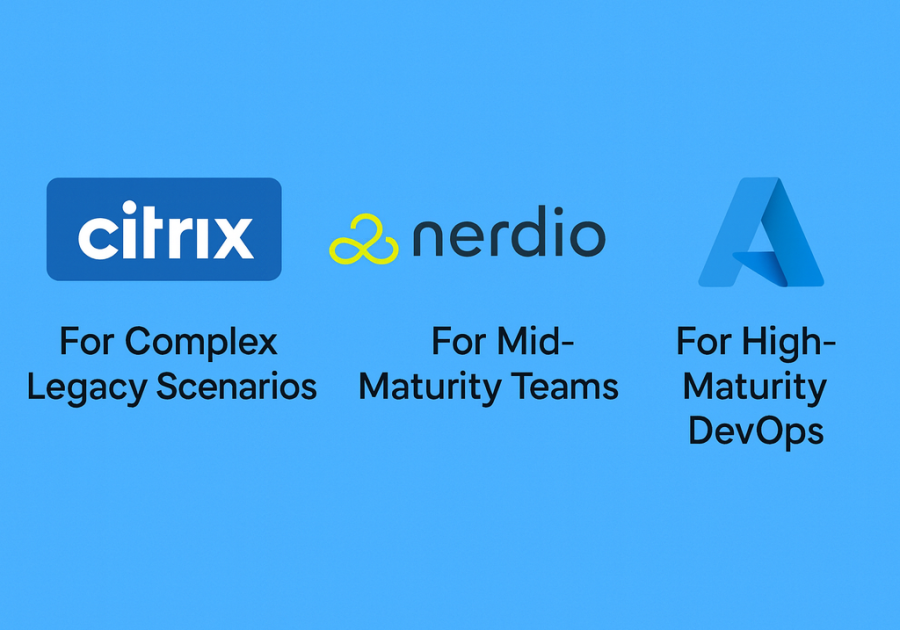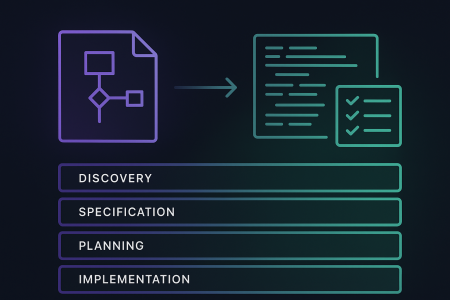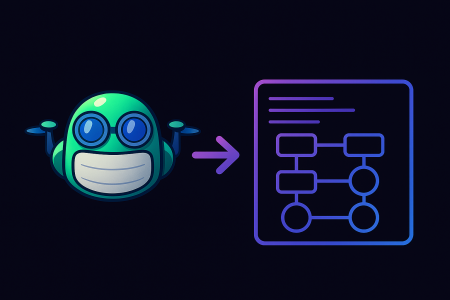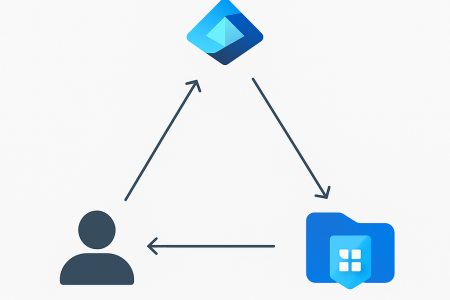When organisations ask, “Which virtual desktop platform should we use in Azure?” the right answer often depends less on features and more on your DevOps maturity.
All three options—Native Azure Virtual Desktop (AVD), Nerdio Manager for Enterprise, and Citrix on Azure—run on Azure infrastructure. What differs is how much responsibility you take on versus how much you hand off to a management layer.
Native AVD: The Azure-First Choice
Azure Virtual Desktop is Microsoft’s native VDI service. With Native AVD, you interact directly with Azure constructs—host pools, session hosts, images, scaling rules—without a third-party management layer.
Key Features
- Azure-native integration: Full alignment with Entra ID for conditional access, MFA, PIM, and lifecycle workflows.
- Infrastructure-as-Code (IaC): Entire environments can be built and updated from Bicep or Terraform templates.
- Custom scaling: You define autoscaling via Azure Automation, Functions, or custom scripts.
- Monitoring: Integrated with Azure Monitor, Log Analytics, and Defender for Cloud.
Why It’s Good
- Lowest cost: no extra licensing beyond Azure consumption.
- Maximum flexibility: you can design every component to your standards.
- Ideal for DevOps teams who want to treat AVD like any other Azure workload (CI/CD pipelines, automated testing, blue/green host pool deployments).
Considerations
- More manual effort if you don’t have automation in place.
- Image lifecycle (patching, updating, rolling out) requires scripting or third-party tooling.
Best Fit: Enterprises with high DevOps maturity, or organisations already running IaC pipelines in Azure.
Nerdio Manager for Enterprise: The Automation Layer
Nerdio sits directly on top of AVD. It doesn’t replace AVD—it enhances it with automation, governance, and cost optimisation. For many organisations, Nerdio is the “missing middle” between raw Azure and full-blown Citrix.
Key Features
- Autoscaling: Dynamically powers up/down session hosts based on user load and business hours. Supports:
- Scale-in/out thresholds.
- Schedule-based scaling (e.g., office hours).
- Burst-to-Azure-Compute (temporarily add capacity).
- Cost Optimisation: Park VMs during off-hours, use reserved instances, or shift workloads to cheaper SKUs automatically.
- Image Lifecycle Management: Streamlines patching and updating golden images. You can roll new images into host pools with minimal downtime.
- Delegated Administration: RBAC-friendly console for IT teams, MSPs, or delegated admins. Makes it easy to manage multiple tenants.
- Reporting & Monitoring: Provides insights into session usage, costs, and scaling effectiveness.
Why It’s Good
- Shrinks the operational overhead of AVD.
- Enables IT teams without deep DevOps skills to still run efficiently.
- Particularly valuable for MSPs managing multiple customers, or enterprises without large Azure engineering teams.
Considerations
- Licensing cost (though much lower than Citrix).
- You rely on Nerdio’s orchestration model—less IaC flexibility compared to Native AVD.
- That said, you can still deploy Nerdio and its core resources with Bicep or Terraform, then use Nerdio to simplify ongoing operations (autoscaling, image lifecycle, reporting).
Best Fit: Mid-maturity organisations, MSPs, or enterprises leaving Citrix who want automation without building it all themselves.
Citrix on Azure: The Legacy Heavyweight
Citrix has been the gold standard in enterprise VDI for decades. On Azure, Citrix is layered over AVD or Azure IaaS, providing additional tooling for management and user experience.
Key Features
- HDX Protocol: Optimised delivery for graphics-heavy or latency-sensitive workloads (CAD, healthcare imaging, 3D rendering).
- Advanced Session Management: Mature tools for reconnection, failover, and multi-site environments.
- Hybrid Flexibility: Can span on-premises datacentres and Azure simultaneously.
- Ecosystem Add-ons: App layering, profile management, and third-party integrations built over years.
Why It’s Good
- Still unmatched for complex, global, or graphics-heavy use cases.
- Strong option if you already have significant Citrix investment and skills.
Reality Today
- For most knowledge-worker use cases (Office, Teams, web apps), AVD and Citrix deliver similar user experience. Bandwidth improvements and RDP enhancements mean Citrix no longer has a decisive UX advantage.
- Citrix licensing costs have increased sharply, causing many organisations to re-evaluate whether the premium is justified.
- Active Directory Requirement: Citrix environments typically still require certain servers and session hosts to be domain-joined (AD DS or Azure AD DS). By contrast, Native AVD supports Entra ID join, enabling a fully cloud-native deployment without traditional Active Directory.
Best Fit: Enterprises with niche workloads, hybrid dependencies, or existing AD-joined infrastructure that AVD/Nerdio cannot replace natively.
Decision Guide: Match to DevOps Maturity
| DevOps Maturity | Recommended Option | Why |
| High (IaC-first, CI/CD pipelines, Azure-native ops) | Native AVD | Full control, lowest cost, fits existing DevOps practices. |
| Medium (some automation, want management out of the box) | Nerdio | Built-in autoscaling, image lifecycle tools, cost optimisation. |
| Low (manual ops, complex legacy apps, global hybrid needs) | Citrix | Mature enterprise VDI, but expensive and often overkill. |
Final Thoughts
Today, the real question isn’t “Which has the best end-user experience?”—because for most scenarios, AVD and Citrix are indistinguishable to the user. The real question is:
- Do you want to run virtual desktops as code? If yes, go Native AVD.
- Do you want automation without building it? Go Nerdio.
- Do you need hybrid or niche performance? Citrix might still make sense, but rising costs are driving many to re-evaluate.
In practice, many Citrix customers use Nerdio as the transition step. It gives them automation and a simpler management layer, while bringing workloads natively into Azure without the licensing burden of Citrix.







